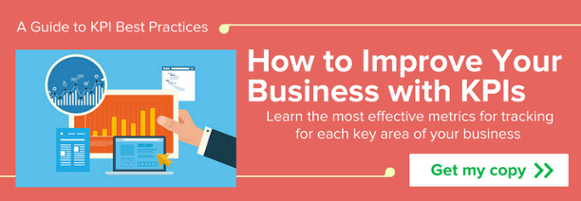6 Financial Metrics Your MSP Should be Tracking

In just about every business meeting, webinar, training, or retreat, the topic of goal setting is on the slate. It’s no secret that specific and measurable goals, especially a business’s financial goals, are important.
For that reason, it’s even more important to understand key performance indicators (KPIs) and the business KPIs you should be using to track your progress on those goals. Furthermore, analysis of key financial metrics allows you to be responsive to any areas where you may be coming up short and help you understand where to build.
Why MSPs should be tracking financial metrics
Businesses, particularly in the tech industry, try to focus on a lot of different KPIs, but they often miss the important metrics. While there’s much to consider regarding the scope of your business, from IT and customer service to marketing and sales, there are also a lot of KPIs to look at to make strategic business decisions.
However, one of the most important areas to analyze includes the several key financial metrics. These metrics help you assess your current position and provide insight into where improvements can be made and how to leverage your successes to continue your growth.
The 6 key financial metrics your MSP should track
While this is not, in any sense, an exhaustive list of financial metrics worth considering, as your metrics should always align with your specific goals, these are a few of the most important metrics you might need to examine closely to meet profitability and growth goals.
1. Monthly recurring revenue (MRR)
Your MRR is the income you can reliably count on each month. This is based on subscriptions, renewals, and contracted services. MRR should be a predictable number and one that informs your growth. Utilizing this data allows you to strategically scale your business based on established income streams.
To determine your MRR, simply multiply the number of accounts you have by the average recurring revenue per account. Why not just total the value of all your recurring revenue? Because, finding the average value of each account’s recurring revenue can help with determining the impact of customer attrition on MRR.
2. Managed service agreement/contract profitability
This is the profit you make on each service agreement you hold with a client. The temptation exists to simply look at the income, but to really understand this metric, you have to break it down and dig a bit deeper.
There are, essentially, two ways to look at this metric. The first method requires that you look at how much you make from a specific client less the cost of attaining said client. This is known as the client contribution (CC). In other words, exactly how much is an individual client contributing to your gross margin?
You can also look at your client effective rate (CER), which analyzes the value of a client based on how much you earn from them divided by the amount of time you dedicate to their service agreement.
Being aware of how each service agreement is impacting your business allows you to adjust those agreements as needed and, perhaps, determine what clients you target for acquisition.
3. Customer lifetime value (CLV)
For the duration of your relationship with this customer, how much value will they bring? Acquisitions being what they are, in terms of cost, client retention is typically quite a bit less costly than winning new clients.
That said, part of your growth strategy should absolutely be creating new or more revenue from existing clients through upgraded service offerings. CLV is factored by subtracting the cost of acquisition from customer revenue.
4. Revenue growth rate
Perhaps one of the most overlooked financial metrics is revenue growth rate, which looks at the change in sales revenue between two periods, whether that be month to month, quarter to quarter, or year to year. How you decide to measure this growth (or lack of) depends on your short and long-term strategies and goals; however, the key variable is that the time periods you choose to analyze must be equal in length.
One important element that must be factored in here is churn rate. The immediate response to flagging growth is, typically, to invest in methods and efforts that will earn back lost business, but strategically, the stronger, more balanced response is to focus on reducing the churn rate rather than increasing the revenue growth rate. Again, you’ll want to look at all the numbers here, but stability is generally preferable to paying for new customer acquisition.
5. Earnings before interest, taxes, depreciation, and amortization (EBITDA)
While there’s some debate over the value of this key financial metric, it’s a fairly standard assessment of a business’s profitability and performance overall. It’s important as it provides insight into profit margins without factoring in any deductions. For that reason, it provides a clear look at a company’s cash flow and potential for stability and growth in the future.
There are two ways to calculate EBITDA. The first method is to add operating income to depreciation and amortization, and the second method adds net profit, taxes, interest, depreciation, and amortization.
One of the biggest uses here is that it acts as a point of comparison between businesses and, in a sense, levels the playing field to compare profitability and performance.
6. Gross margin
Finally, but perhaps most importantly for managed service providers, another essential KPI is gross margin. This key business metric determines just how much revenue a business is generating to cover its overhead. The higher a company’s gross margin is, the more it can invest in strategic growth. For that reason, it’s a good key financial indicator of a company’s health and potential for growth.
There are multiple ways suggested to calculate gross margin, but one method is to subtract cost of services from total services revenue and then divide that by total services revenue. Ideally, a healthy percentage for this calculation is 50%, with 60% suggesting industry leadership. When the number falls, it could lead to cash flow issues.
The primary goal of tracking key financial metrics is to spot potential growth issues before they happen, which allows you and your team to respond in a strategically appropriate way. Successful businesses are monitoring key business metrics regularly and making analysis part of their goal setting strategies. Again, without understanding where your company is making progress or falling behind, it’s difficult to achieve any benchmarks your team sets.
Track the right financial metrics with ease through BrightGauge’s KPI dashboards
Let’s be honest. That’s a lot of numbers and a lot of data and a lot of work if you don’t have the right tools.
That’s where BrightGauge’s KPI Dashboards come in. All accounts come with a number of "out of the box" preset gauges, and dashboards are fully customizable, allowing you to select and filter for the data you want and need. Not only do you get the data, but you can analyze it side-by-side and then deliver it to your team or customers so everyone has full visibility into performance and critical metrics.
When it comes to the key financial metrics that help you determine the direction your business is headed in, you want the right tools by your side, the tools that help you grow.
Free MSA Template
Whether you’re planning your first managed services agreement, or you’re ready to overhaul your existing version, we've got you covered!



